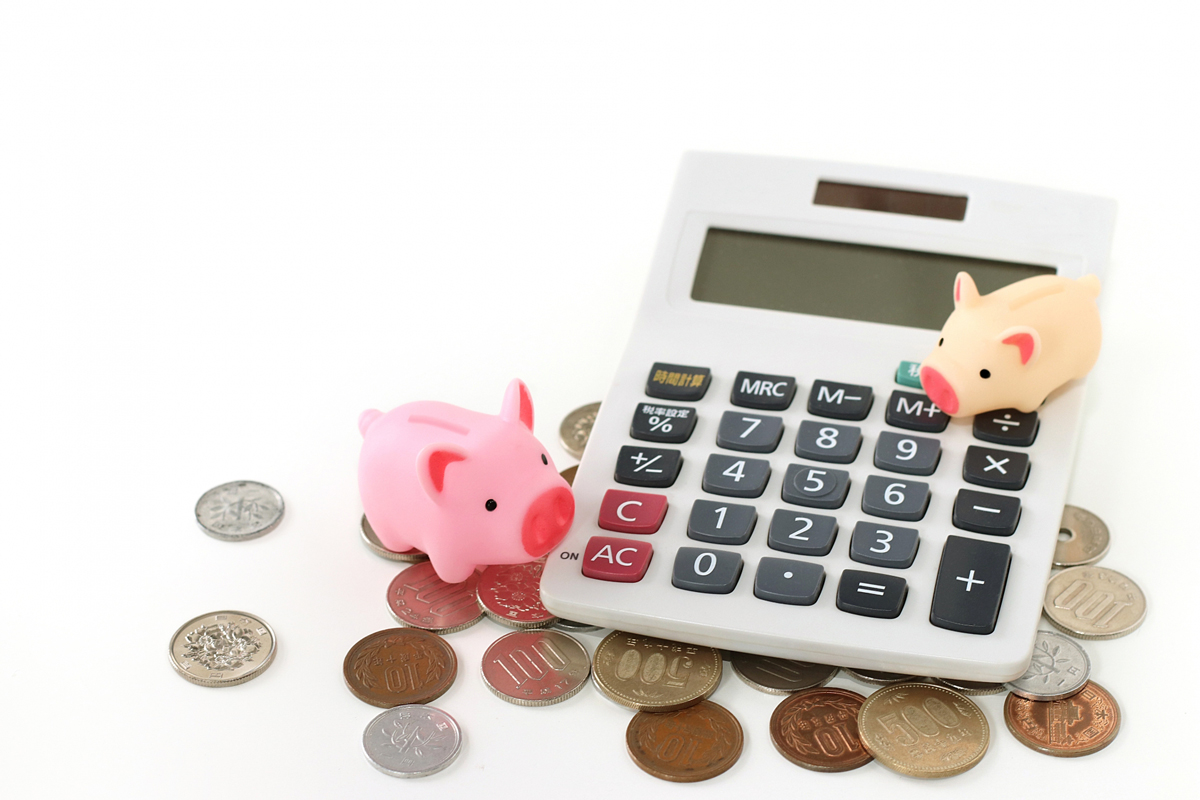Living Expenses in Japan and Saving Tips

by Madelaine
Japan’s busy capital is attracting many people, but high living expenses can test one’s enthusiasm to settle down in Tokyo. To help you manage your finances this article tells you how much money you will need and where you can save without missing out on all that the country has to offer.
コンテンツ
Average Living Expenses
Japan certainly has the image of being an expensive country, but even in Tokyo, you can live quite comfortably with an entry-level salary. In the table, you can see average living expenses and a budget version. Below we will explain each point and show how you can save more money.
This article is based on the annual statistics of living expenses for single households across Japan. Since living costs in the countryside and in the cities can vary greatly, slight alterations have been made to better reflect the situation of young people living alone in Tokyo.
| Item | Average Cost (in JPY) | Budget Cost (in JPY) |
|---|---|---|
| Rent | 70,000 | 45,000 |
| Utilities | 10,000 | 8,000 |
| Phone & Internet | 10,000 | 5,000 |
| Food | 40,000 | 20,000 |
| Transportation | 5,000 | 5,000 |
| Health & Daily Necessities | 3,000 | 2,000 |
| Clothing & Personal Care | 10,000 | 5,000 |
| Going out | 10,000 | 5,000 |
| Entertainment | 5,000 | 2,000 |
| Total | 163,000 | 97,000 |
1. Rent
Rent in Tokyo is higher than in most other regions of Japan. With 70,000 Yen you can get a nice apartment. For someone earning a typical salary of 250,000 Yen per month, this is just within the 1/3 of the net income that is recommended to be spent on living.
Cut cost: If you are willing to make compromises in regards to size, distance to city center, facilities, or consider shared living you can reduce your costs down to around 45,000 Yen per month.
READ ON How to cut down rent costs in Tokyo
2. Utilities
Your bills for electricity, gas, and water, should be around 10,000 Yen per month. Though it is pay-as-you-use, fixed monthly often make up the larger chunk of your utility bill.
Cut cost: There isn’t much room to lower the cost here. Not turning on the AC when it is freezing or boiling outside, I also cannot recommend. Still, with mindful use of electricity and water you can keep scrape of around 20% bit of your monthly bills.
3. Phone&Internet
Phone and Internet contracts in Japan can easily cost 5,000 per month each. How much you pay exactly can vary vastly depending on the provider and services you choose.
Cut cost: To save money here, looking for cheap providers, cutting the phone flat-rate you don’t need, or getting portable wi-fi you can use at home and on the go, are ways to cut down your communication cost by half.
READ ON Save with the right internet option for you
4. Food
In 2017 the average amount spend on food was 40,000 Yen per month. For this much money, you can get most of your food from restaurants and convenience stores. If you only eat out a few times a week 30,000 Yen a month or 1,000 Yen per day are a realistic budget.
Cut cost: The key to cutting down on food cost is cooking by yourself. In addition, comparing prices, shopping at cheaper supermarkets, and buying in bulk one can considerably reduce your expenses for groceries. This way you can reduce the money you spend on food to 20,000 a month. The rest is up to you, your culinary and management skills.
5. Transportation
Transportation costs really change by where you live but, in the city, it really boils down to your train fare. The cost for a monthly commuter pass is often somewhere between 5,000-10,000 Yen per month. Any additional costs depend on much you travel around in your free time.
Cut cost: The good news is that your employer will most likely pay for your commuter pass, cutting your transportation expenses down to almost nothing. Getting commuter passes for 3 or 6 months is another option to save a little money every month.
6. Health&Daily Necessities
We often forget to have a monthly budget to buy daily items like toothpaste, detergent, and tissues or put money on the side for an occasional doctors visit. It is not a lot but planning 3,000 Yen a month will help you to account for these small expenses over the year.
Cut cost: Going to the doctor early on if you are not feeling well is a good preventive measure. It may cost money at that moment, but the earlier you go the cheaper the costs for necessary treatments are likely to be. Otherwise, avoiding wastefulness when using daily items will lower these costs in the long run.
7. Clothing&Personal Care
When it comes to clothing and personal care items, like hairdresser visits, a big gap in spending can be noticed. While men spend an average of 5,000 Yen per month, women spend a whopping 20,000 Yen on average on their style and beauty regimen. Expenses in this category are also higher for people who have business style dress codes at work. Those snazzy suits don’t come cheap.
Cut cost: Regardless of how you identify you can easily cut your expenses by half in this category. It might take some searching, but you can find budget-friendly hair salons just as easy as you can get good quality outfits at affordable prices. A simple hair cut for men can cost as little as 1,000 Yen, and even women can make do with 5,000 Yen as long as they don’t want to get their nails done every month.
8. Going out
This one also depends highly on your preference. In Japan, it’s the men who spend more in this category with an average of 15,000 Yen a month. Women only use around 5,000 Yen, kind of balancing out the spending patterns in the previous section.
Cut cost: This one comes down to one simple truth: go out less. Limit yourself to one or two times a month and 5,000 Yen will be enough for you.
9. Entertainment
Books, music, games, movies, or maybe your Netflix subscription. The Japanese spend an average of 5,000 Yen per month, with men on average using more money for these things.
Cut cost: You can easily reduce this to around 2,000 Yen per month if you buy less (your room will thank you) or buy what you can second-hand. Japanese people often resell rather than to throw away, so even relatively new games and more can be found in Japan’s active second-hand network in shops and online
10. Other expenses
With the amount above, you can live in Tokyo. But the truth is you probably have other expenses not listed here as well. Whether you like to go out a lot, work out at a gym, get a bike, enjoy hiking, have that one item you need to have, pursue a hobby, attend to concerts, or study something, depending on your interest additional regular or irregular expenses are likely to be among your bills.
This one is really up to you. Planning an extra 10,000-20,000 Yen for pastime activities in your monthly budget will allow you to not to miss out on these things that matter to you.
How about savings?
Living costs are nice, but how much will that leave you with as savings? To get an idea, let’s find out how much of your gross income actually makes it into your bank account?
A typical income for young employees is 250,000 Yen per month. In this example, taxes should be close to 50,000 Yen per month and your net income would be 200,000 Yen per month. Get an estimate.
With a net income 200,000 Yen per month and average spending habits, you would be able to save 20,000-40,000 Yen per month. Someone who lives according to the budget plan suggested above can keep his living expenses at around 100,000 Yen per months, thereby save almost half of his salary. Try separating your savings into long-term savings for the, and short-term savings for your next trip home, a new computer, or other big expenses to get a better sense of if your saving goals are on track.
Living expenses of real people
Averages have to be taken with a grain of salt. In all likelihood, your expenses will be different from the ones above. So we asked two young foreigners living and saving money in Tokyo about their monthly expenses. Both of them moved to Japan for work and this is what they are spending.
Looking at these examples the secret to saving money in Japan lies in controlling fixed monthly costs and making conscious choices on where to spend one’s money.
| Item | Occasional Saver (in JPY) | Extreme Saver (in JPY) |
|---|---|---|
| Rent | 45,000 | 15,000 |
| Utilities | 10,000 | 8,000 |
| Phone & Internet | 5,000 | 4,000 |
| Food | 40,000 | 20,000 |
| Transportation | 5,000 | 3,000 |
| Health & Daily Necessities | 4,000 | 2,000 |
| Clothing & Personal Care | 5,000 | 2,000 |
| Going out | 8,000 | 5,000 |
| Entertainment | 2,000 | 3,000 |
| Total | 124,000 | 62,000 |
The occasional saver takes care to minimize her fixed monthly costs by finding a budget-friendly place to live. Otherwise, she is spending money freely to enjoy life in Japan, which includes eating out from time to time.
Our extreme saver is living in company housing, which allows him to cut down rent costs significantly. He cooks every meal by himself and told us that sometimes his monthly expenses for food are only 8,000 Yen, reducing total living expenses to less than 50,000 Yen. Currently though, he is spending a little extra every month to go to the gym.
How do your own spending patterns compare to the examples above? Go ahead and set your own spending and saving goals for your life in Japan!
Recommended Posts

May Sickness: A Japanese Phenomenon
10 5月 2021 - Daily Life, Life


